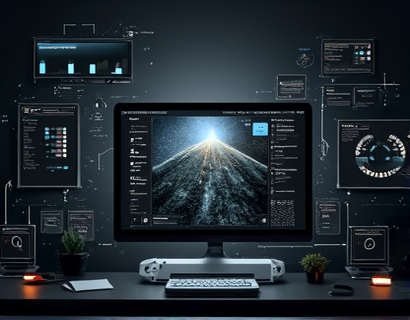AI Chat Interface: Your Ultimate Guide to Auction Expertise and Insights
In the fast-paced world of auctions, having access to real-time information and expert insights can significantly enhance your strategy, whether you are a buyer, seller, or industry professional. The advent of AI chat interfaces has revolutionized the way individuals interact with auction services, providing a seamless and efficient means of obtaining crucial information. This guide will explore how an advanced AI chat interface can elevate your auction strategy, streamline the auction process, and empower you to make informed decisions.
Understanding the Auction Landscape
The auction industry is diverse, encompassing various sectors such as art, real estate, antiques, and collectibles. Each sector has its unique characteristics, challenges, and opportunities. Buyers and sellers alike must navigate this complex landscape to achieve their goals. An AI chat interface serves as a valuable tool in this endeavor, offering insights tailored to specific auction types and market conditions.
The Role of AI in Auctions
Artificial intelligence has made significant strides in recent years, and its application in the auction industry is no exception. AI can analyze vast amounts of data, identify trends, and provide recommendations based on real-time information. This capability is particularly beneficial in auctions, where timing and market knowledge are critical. By leveraging AI, users can gain a competitive edge, whether they are bidding on a rare item or looking to sell their assets at the right moment.
Benefits of an AI Chat Interface
An AI chat interface offers numerous advantages for auction participants. Here are some key benefits:
- Instant Access to Information: Users can receive immediate answers to their queries, eliminating the need to sift through extensive resources or wait for human assistance.
- Personalized Insights: The AI can tailor responses based on user preferences, previous interactions, and specific auction types, ensuring that the information provided is relevant and useful.
- Enhanced Decision-Making: With real-time data and expert insights at their fingertips, users can make informed decisions quickly, whether they are bidding or setting a reserve price.
- Streamlined Communication: The chat interface facilitates seamless communication between buyers, sellers, and auction houses, reducing misunderstandings and improving the overall auction experience.
- 24/7 Availability: Unlike traditional customer service, an AI chat interface is available around the clock, allowing users to access information whenever they need it.
How AI Chat Interfaces Work
AI chat interfaces utilize natural language processing (NLP) and machine learning algorithms to understand and respond to user inquiries. When a user types a question or request, the AI analyzes the input, identifies the intent, and retrieves relevant information from its database. This process occurs in real-time, providing users with quick and accurate responses.
Key Features of AI Chat Interfaces
To maximize the benefits of an AI chat interface, several key features should be considered:
- Natural Language Understanding: The ability to comprehend and interpret user queries in everyday language is essential for effective communication.
- Contextual Awareness: The AI should be able to remember previous interactions and provide contextually relevant responses, enhancing the user experience.
- Integration with Auction Platforms: Seamless integration with existing auction platforms allows the AI to access real-time data, ensuring that users receive the most up-to-date information.
- Data Security: Ensuring the privacy and security of user data is paramount, especially in financial transactions and sensitive information exchanges.
Implementing an AI Chat Interface in Auctions
For auction houses and platforms looking to implement an AI chat interface, several steps should be followed:
1. Define Objectives
Clearly outline the goals of the AI chat interface. Determine what information users will need and how the AI can enhance their auction experience.
2. Choose the Right Technology
Select a robust AI platform that offers the necessary features, such as natural language processing and machine learning capabilities. Consider scalability and integration options with existing systems.
3. Develop a Knowledge Base
Create a comprehensive knowledge base that the AI can draw from. This should include information about auction processes, industry trends, and frequently asked questions.
4. Train the AI
Utilize machine learning techniques to train the AI on relevant data. This process involves feeding the AI with historical auction data, user interactions, and expert insights to improve its accuracy and responsiveness.
5. Test and Iterate
Before launching the AI chat interface, conduct thorough testing to identify any issues or areas for improvement. Gather feedback from users and make necessary adjustments to enhance functionality.
6. Monitor Performance
After implementation, continuously monitor the performance of the AI chat interface. Analyze user interactions, response accuracy, and overall satisfaction to ensure the system meets user needs.
Enhancing Buyer and Seller Experiences
For buyers and sellers, an AI chat interface can significantly enhance their auction experiences. Here’s how:
For Buyers
Buyers can benefit from personalized recommendations based on their preferences and bidding history. The AI can provide insights into market trends, helping buyers understand the value of items and make informed bids. Additionally, the chat interface can alert buyers to upcoming auctions, ensuring they never miss an opportunity.
For Sellers
Sellers can utilize the AI chat interface to receive guidance on setting reserve prices, understanding market demand, and preparing items for auction. The AI can analyze past auction results to suggest optimal selling strategies, increasing the likelihood of successful sales.
Industry Professionals and Auction Insights
Industry professionals, including auctioneers and appraisers, can also leverage AI chat interfaces to enhance their services. The AI can provide real-time data on market conditions, helping professionals make informed decisions during auctions. Furthermore, the chat interface can facilitate communication with clients, ensuring that all parties are aligned throughout the auction process.
Case Studies: Successful Implementations
Several auction houses and platforms have successfully implemented AI chat interfaces, resulting in improved user experiences and increased efficiency. Here are a few notable examples:
Case Study 1: Art Auction House
An art auction house integrated an AI chat interface to assist buyers in navigating their extensive catalog. The AI provided personalized recommendations based on user preferences and previous purchases. As a result, the auction house saw a 30% increase in bidder engagement and a 20% increase in sales.
Case Study 2: Real Estate Auctions
A real estate auction platform utilized an AI chat interface to streamline communication between buyers and sellers. The AI provided instant answers to common questions about properties, auction processes, and financing options. This implementation led to a 40% reduction in response times and improved customer satisfaction ratings.
Case Study 3: Antique Auctions
An antique auction house adopted an AI chat interface to educate potential buyers about the value and history of items. The AI offered insights into market trends and provided appraisals based on historical data. This initiative resulted in a 25% increase in successful sales and a more informed buyer base.
Future Trends in Auction Technology
The auction industry is continually evolving, and the integration of AI chat interfaces is just the beginning. Here are some future trends to watch:
1. Enhanced Personalization
As AI technology advances, chat interfaces will become even more personalized, offering tailored experiences based on user behavior and preferences.
2. Integration with Augmented Reality
Combining AI chat interfaces with augmented reality (AR) could revolutionize the auction experience, allowing buyers to visualize items in their own spaces before bidding.
3. Blockchain for Transparency
Blockchain technology may be integrated with auction platforms to enhance transparency and security in transactions, providing buyers and sellers with greater confidence.
4. Advanced Analytics
Future AI chat interfaces will likely incorporate advanced analytics capabilities, offering deeper insights into market trends and user behavior.
Conclusion
The integration of an AI chat interface into the auction process represents a significant advancement in how buyers, sellers, and industry professionals interact with auction services. By providing real-time expert insights and streamlining communication, these interfaces empower users to make informed decisions and enhance their overall auction experience. As technology continues to evolve, the potential for AI in the auction industry is limitless, paving the way for a more efficient and user-friendly auction landscape.











































